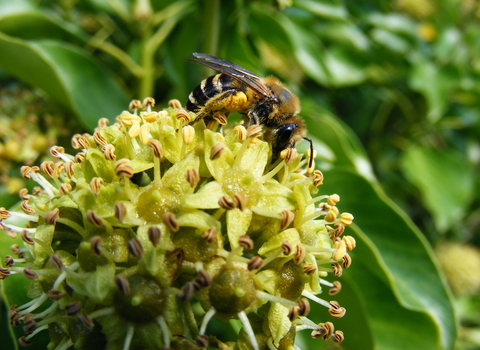
Ivy bee ©Jane Adams
Ivy bee
The ivy bee is a new arrival to the UK. First recorded here in 2001, it is slowly spreading north. It feeds mainly on the nectar of ivy flowers and can be seen in autumn when this plant is in bloom.
Enw gwyddonol
Colletes hederaePryd i'w gweld
September to NovemberSpecies information
Category
Ystadegau
Length: 1.0-1.3cmIntroduced, non-native species.
